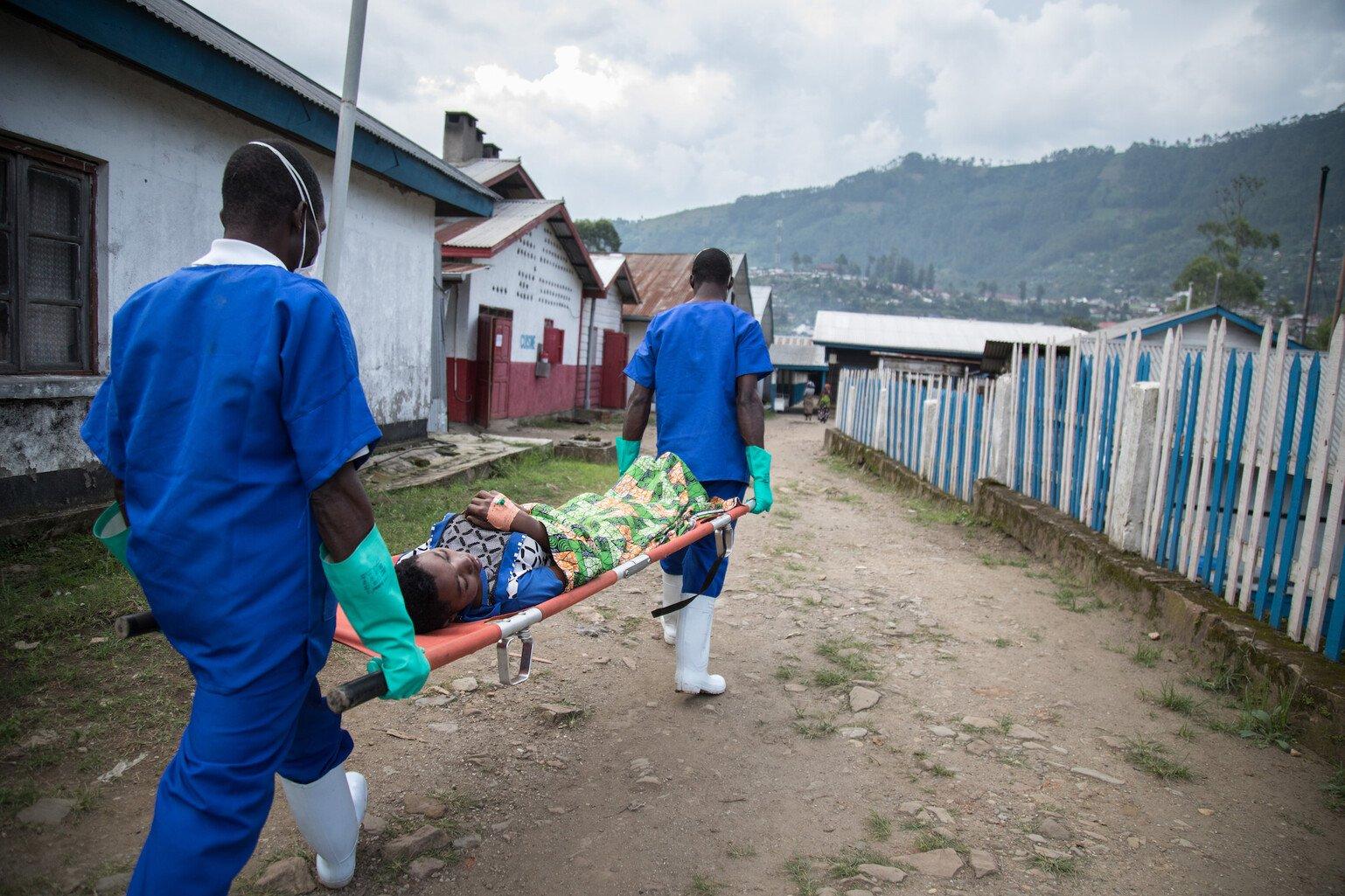
Vector-borne diseases
Learn how climate change will impact vector-borne diseases like dengue fever and Zika virus.
A failure to slow global warming is providing many deadly diseases with the opportunity to expand their reach, putting the health of millions of people at risk. Read on to understand how climate change and infectious disease are linked, and what we can do to limit the damage.

Two medical workers transfer a patient from the cholera treatment unit of Médecins Sans Frontières to the intensive care unit at the general hospital in Masisi, in the east of the Democratic Republic of the Congo.
Alexis Huguet / AFP via Getty Images
Many infectious diseases are climate sensitive.
Warmer climates are expanding the areas where disease-carrying vectors (like mosquitoes and ticks) can survive.
Increased rainfall, floods and drought can create stagnant water for vectors to breed or increase the risk of contaminated water.
Extreme weather events disrupt existing infrastructure and health systems, making many more vulnerable to infection.
Other factors like migration, urbanisation and deforestation can also impact the spread of infectious diseases.
Without swift climate action, we will see an escalation of infectious diseases.
We need to act now to limit and adapt to the impacts of climate change.
Climate change is widespread, rapid and intensifying.
Homes are being lost due to unprecedented floods and fires, heat-related illnesses are on the rise, and our food systems are increasingly at risk.
While rising global temperatures are proving disastrous for humans, they’re providing the perfect environment for many climate-sensitive infectious diseases to thrive.
Global warming is expanding the areas in which disease-carrying vectors (like mosquitoes and ticks) can survive. Higher levels of rainfall, flooding and droughts can create stagnant water for vectors to breed or increase the risk of contaminated water. And extreme weather events can disrupt existing infrastructure, sanitation and health systems, making many more vulnerable to infection.
Other factors linked to climate change can also play a role in the spread of infectious diseases: like migration, urbanisation and deforestation. However, due to the complex, overlapping factors at play, it can be challenging to link these impacts directly to climate change.
The March 2022 report from the Intergovernmental Panel on Climate Change (IPCC) warned that without swift climate action we will see an escalation of infectious diseases. They will spread to new regions (and may decline in some endemic areas). They’ll surge in areas where they were previously under control. And diseases that have never previously infected humans (Disease X) may 'spill over' from animals.
Global heating and increased drought and flooding represent a significant threat to public health, likely leading to the escalation of vector, food and water-borne diseases. The world’s poorest are likely to suffer the most from this escalation and urgent action is needed from the global health community (and beyond) to help us understand these changes, strengthen systems and develop interventions to support communities to adapt to this unprecedented threat.
Discover more about how climate change is affecting:

Learn how climate change will impact vector-borne diseases like dengue fever and Zika virus.

Learn how the risk of waterborne diseases like cholera and typhoid is worsening with climate change.

Learn how the environment plays an important role in the transmission of many foodborne diseases.
While climate change may increase diseases in nature, whether this leads to an increase in disease risk for humans depends upon a range of societal, infrastructure and medical factors.
The most important thing we can do is act now to limit the impacts of climate change. This means reducing the flow of heat-trapping greenhouse gases into the atmosphere. We can do this in two ways:
As the IPCC noted, we must stabilise greenhouse gas levels "in a timeframe sufficient to allow ecosystems to adapt naturally to climate change, ensure that food production is not threatened and to enable economic development to proceed in a sustainable manner”.
While mitigation provides global benefits, adaptation often happens on a regional or local level. We need to explore and implement ways to adapt to life in a changing climate.
This article was first published on 12 May 2022.
We’re funding vital research into the impact climate change has on human health around the world, at national, regional and global levels.
There are currently no open funding opportunities for Climate and Health. Learn more about the funding we provide.